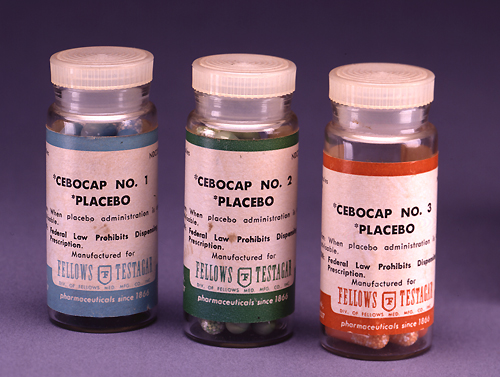The Price of Relief

“Take two of these and call me in the morning.”
The idea that pain relief can come in the form of tablets or pills is so commonplace, especially in the United States, that it’s invaded our vernacular. Aspirin, acetaminophen, ibuprofen, and others are over-the-counter remedies which hold the promise of relief from headaches, aches, and various other ailments not worth mentioning. Scientifically, they work, but it should surprise few to no one to hear that pills which medically do nothing can still yield a successful result. These pills (and other do-nothing treatments), as you probably know, are called placebos.
Placebos are designed to have no actual effect, as demonstrated by the word’s origins. According to the Online Etymology Dictionary, its first known use of the term “placebo” in the medical world was to reference “a medicine given more to please than to benefit the patient” — that is, one which wouldn’t treat the symptoms, but could make the patient happier nonetheless. At times, this fake remedy results in an improvement — perceived or actual — which we call the “placebo effect.” But the treatments don’t do anything themselves.
That said, the placebo effect is a real phenomenon, first identified in the 1950s and studied ever since, with sometimes surprising results. Take, for example, a 2008 study conducted by a team led by Dan Ariely, a behavioral economist at Duke University. Ariely and company gathered 82 people and gave them electric shocks in their wrists. Then, each of the test subjects were given one of two pills, shocked again, and asked to compare the pre-pill pain to the post-pill discomfort. Of the first group, 85% said the pill reduced the pain. On the other hand, only 61% of the second group said that the pill did its job. Whatever the researchers gave their “patients” worked — but the first pill clearly worked better.
It shouldn’t surprise you that some of these test subjects received placebos. That, however, is not the case. All of the test subjects received placebos, and on top of that, both groups received the exact thing — sugar pills of identical size, shape, etc. So why did the first group feel less pain than the second?
The price, apparently. The second group were told that their pills were being sold at a huge discount.
Specifically, as the New York Times reported, the first group was informed that their pills cost $2.50. The second group, though, were told that the pills typically sold for $2.50, but the price had been cut dramatically — all the way to $0.10. Other than that, the two groups went through the same process — same electrodes, same pills, everything. The discounted price rattled some of the subjects’ faith in its quality, and, therefore, reduced the placebo effect.
Bonus Fact: Placebos only work if you don’t know they’re fake, right? Wrong — kind of. According to one study, reported by TIME, if the patients are told that the pills create a “mind-body self-healing process” — that is, the placebos created the placebo effect — the pills may still “work.”
From the Archives: The Decoy Effect: Another Dan Ariely study.
Related: Placebos. (The linked-to ones are expensive, yes. You can find them at a discount, but they’ll be less effective.)
